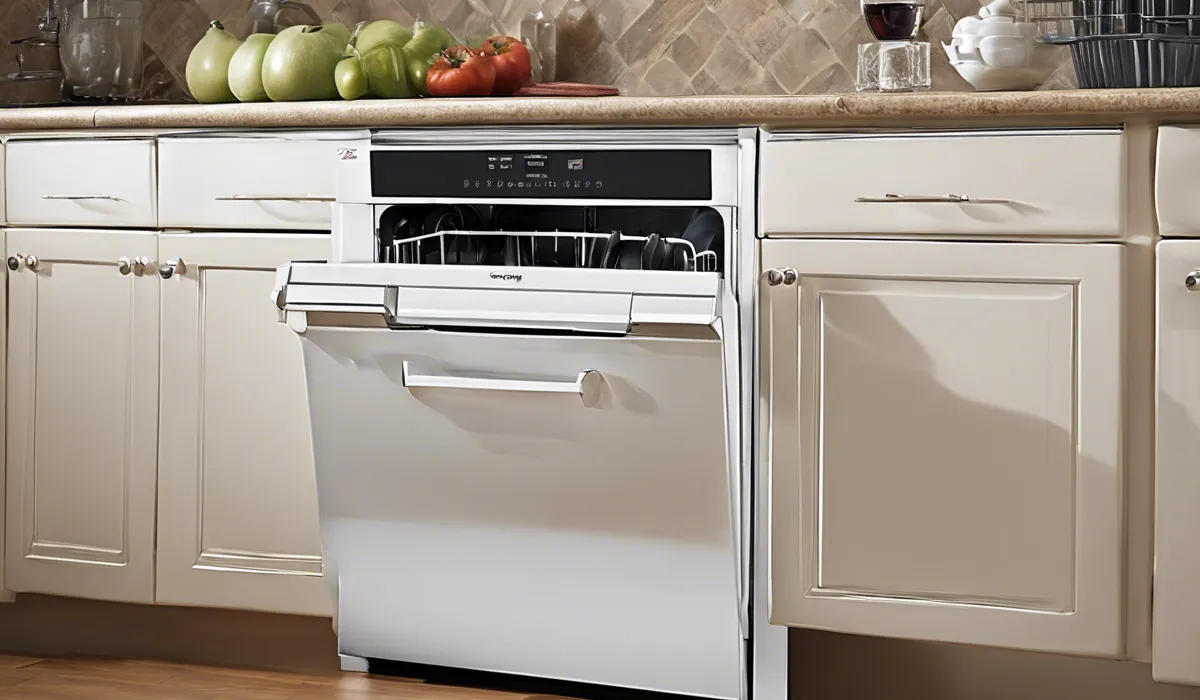How to Seal Gap Under Dishwasher: A Quick Fix Guide
To seal a gap under a dishwasher, measure the space and cut a piece of rubber gasket to fit. Push the gasket firmly into the gap, ensuring a snug fit. If needed, secure with waterproof adhesive or silicone caulk for a watertight seal.
Assessing the Gap Under the Dishwasher

Measuring the Gap Size
To begin addressing the gap under your dishwasher, it is essential to measure the size accurately. Using a tape measure, note the length and width of the space. The size of the gap will guide you in choosing the appropriate sealant material and method.
Identifying the Gap’s Cause
Understanding why there is a gap under your dishwasher is crucial. It could be due to an installation issue, where the appliance was not leveled correctly.
Perhaps a recent flooring change has altered the height alignment. Investigate to determine the root cause before proceeding.
Evaluating Seal or Reposition Options
Once you know the gap’s dimensions and cause, evaluate whether sealing is sufficient or if repositioning the dishwasher is necessary.
If the gap is minor and does not affect the dishwasher’s operation, sealing will likely be adequate. However, significant gaps or those causing operational issues may require adjusting the appliance’s position.
Choosing the Right Sealant Material

Types of Sealants: Pros and Cons
There are several types of sealant materials to consider, such as silicone, foam, and rubber strips. Silicone caulk is durable and flexible, making it ideal for watertight seals.
Foam is easy to install and provides insulation but may not be as long-lasting as other options. Rubber strips are sturdy and can be cut to fit, offering a balance between durability and ease of installation.
Material Recommendations Based on Gap Characteristics
For small to medium gaps, silicone caulk or adhesive-backed foam strips are recommended.
These materials can easily fill the space and provide a secure seal. For larger gaps, a combination of foam backing and silicone caulk or a thicker rubber strip might be necessary to ensure stability and a watertight seal.
Step-by-Step Guide to Sealing the Gap

Preparing the Area
Before sealing the gap, the area must be thoroughly cleaned and dried. Remove any debris or old sealant remnants under the dishwasher. Ensuring the area is dirt-free and dry will help the new sealant adhere properly and last longer.
Cutting the Sealant to Length
Once you have chosen your sealant, cut it to the necessary length based on the measurements you took earlier.
If you are using a rubber gasket, ensure it fits snugly into the space without compressing too much, as this could affect its sealing properties.
Applying the Sealant
For adhesive-backed strips, peel off the backing and press firmly into place. If using silicone caulk, cut the tip of the caulk tube at a 45-degree angle for easier application and use a caulk gun to lay a smooth, even bead into the gap. Smooth it out with a caulk tool or your finger, ensuring full coverage.
Ensuring a Watertight Seal
After applying the sealant, check for any missed spots or air bubbles. A properly sealed gap should not allow water or debris to pass through.
Allow the sealant to cure based on the manufacturer’s instructions before using the dishwasher or exposing the area to moisture.
Maintenance of the Sealed Gap
To maintain the integrity of the seal, regularly inspect it for any signs of wear or damage. If you notice the sealant peeling or cracking, it may be time to reapply. Keeping the area clean will also help extend the life of the sealant.
FAQs About Sealing a Gap Under a Dishwasher
How do I measure the gap under the dishwasher before sealing?
Use a tape measure to determine the height and width of the space under the dishwasher where the gap is present.
What material should I use to seal a gap under a dishwasher?
A rubber gasket is ideal for sealing gaps under dishwashers due to its flexibility and water resistance.
How do I install a rubber gasket under the dishwasher?
Cut the rubber gasket to the measured size and push it firmly into the gap to ensure a snug fit.
Should I use an adhesive when sealing the gap under my dishwasher?
If the gasket does not stay in place on its own, use waterproof adhesive or silicone caulk to secure it.
How do I ensure the seal under the dishwasher is watertight?
After installing the rubber gasket, check for any gaps and apply silicone caulk if necessary to ensure a watertight seal.
Final Thoughts
Sealing a gap under a dishwasher involves measuring the space accurately and cutting a rubber gasket to size.
Fit the gasket snugly into the gap, pressing it firmly. For extra security and to ensure a watertight seal, apply waterproof adhesive or silicone caulk if necessary.





